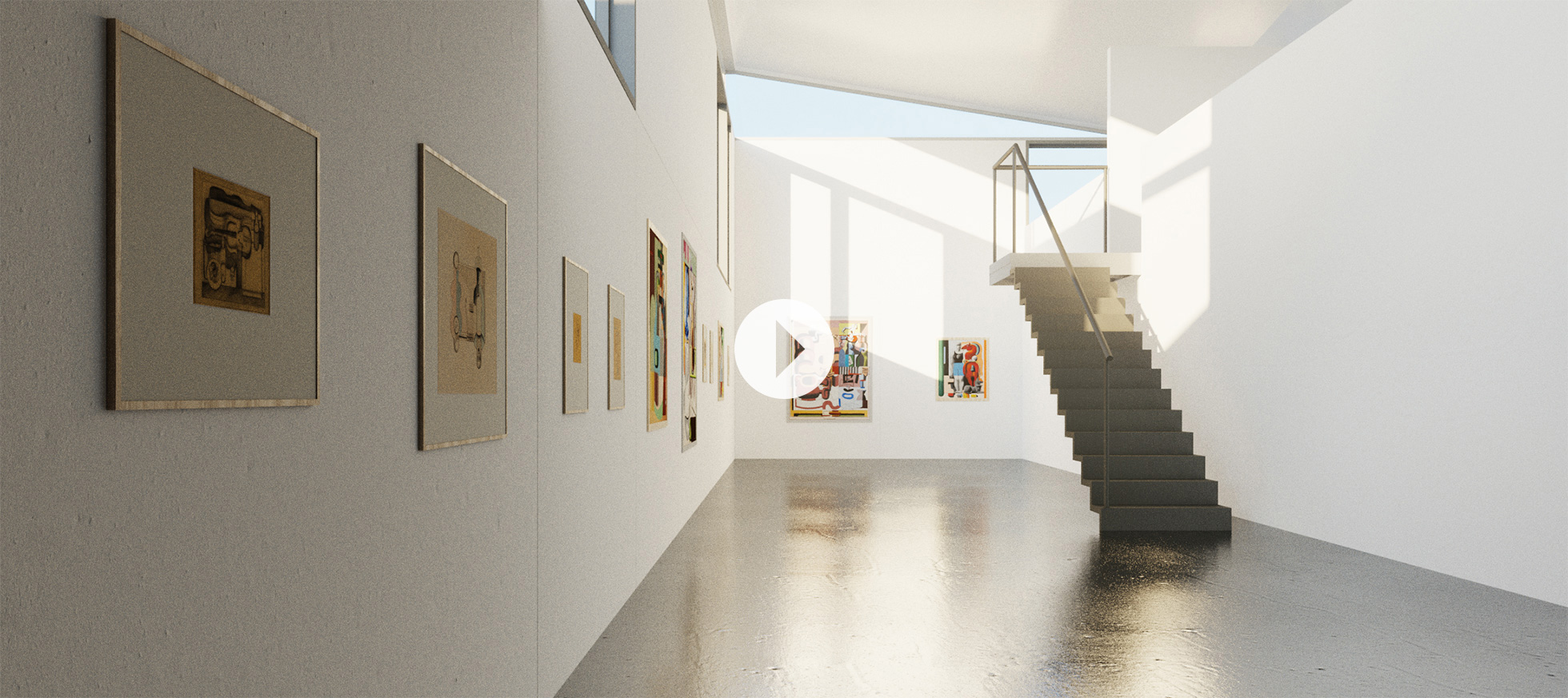About Virtual Gallery
At Galerie Taisei, we have created a virtual gallery for the exhibition of Le Corbusier’s works, mainly from our own private collections. The stage for this exhibition is modeled after one of the architect’s unrealized works, Pavillon d’exposition-palais Ahrenberg. The exhibition space is divided into two parts, permanent exhibition outlining the career of Le Corbusier, and the temporary exhibition that showcases his individual pieces.
INTRODUCTION from script
The "Ahrenberg Pavilion" comes to life in a virtual gallery.
The pavilion is a work of art conceptualized by the architect Le Corbusier that was never built.
A space of liberation lies beyond the bridge, the ritual passage that connects the outside world with the inside.
Le Corbusier's goal was "architecture that gives people happiness".
Living in harmony with nature, waking up with the sun and sleeping with the moon.
The light reflecting off of Stockholm's Sea projects the ocean onto the ceiling through a wall of continuous windows.
You feel the presence of nature in the midst of the city.
In contrast to the open second story, the first floor is illuminated by minimal artificial light where you can interact with the artwork.
Le Corbusier embraces Greek temples and the legacy of classic architecture.
A revision, rather than imitation. He aimed to integrate various forms of art and his architecture was a major influence throughout the world.
The 20th century saw many new waves of art, including Picasso's cubism or Duchamp's Readymade. Le Corbusier used his unique aesthetic sense to express the times by combining aspects from among them.
Le Corbusier continued to draw for the rest of his life in an ever-evolving artistic style.
He began by pursuing a pure expression of geometric forms and transitioned into a variety of expressions including lines with free movement, fleshed out three dimensional forms, and symbolic motifs consisting of simple lines. The palette of colors he used also gradually became stronger.
Even objects he drew within strict geometric compositions somehow project a soft, organic feel.
This is what defines Le Corbusier's identity.
As an artist, Le Corbusier produced paintings, prints, sculptures and tapestries (and more?).
Paintings allowed his imagination to roam freely with the brush and served as an experimental laboratory for his architecture.
What Le Corbusier achieved was liberation.
Skepticism of customs, realization of beauty, blossoming of the self.
People given choices discover new values.
The barriers are now removed.
We raise our gaze and ask ourselves, "What is happiness?"
The virtual museum, modeled after Palais Ahrenberg, together with our private collection, can be viewed with our movie.
“Plans” button displays current location.
“Exhibition Outline” button displays information regarding each exhibits.
Please enjoy our exhibit together with the light and space envisioned by Le Corbusier.

